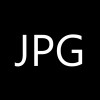L’urée du lait, un indicateur de la conduite du troupeau laitier
Milk urea as an indicator of dairy herd management

Context
All milk producers can get data from the Milk Committee on the tank milk urea concentration estimated by the infrared method and can also obtain individual milk urea content data on request. It is generally acknowledged that off-limits urea concentrations, i.e. below 20 mg/dL or above 35 mg/dL, can indicate unbalanced feeding, with the highest values showing risks of impaired fertility. High milk urea concentrations also reflect considerable wastage of nitrogen by the animal and this is unacceptable in both economic (high feed cost) and environmental terms (excessive nitrogen discharge into the environment) if agriculture is to follow the path of sustainable development. Various practical questions are raised by the people in the field with respect to the information potential of urea determination, such as : - What are the critical values and how should a farmer react ? - How accurate is urea concentration prediction by the infrared method ? - What are the main dietary and non-dietary factors affecting the urea level ? - What can we learn from individual urea levels ? Objectives
The main aim of the project was to monitor urea levels at 14 farms in the Walloon Region over a full year, comprising an indoor housing period and the grazing season and to relate them to dietary parameters (nutritional value of rations), production parameters (milk quantity and composition, live weight, stage of lactation and number of lactations) and pasture management data (fertilizing, grass height, percentage of stems, leaves and clover in fields). The secondary aim was to check the reliability of infrared prediction for urea determination.Results obtained
The study has shown dietary factors to be the main influence on milk urea levels. Providing an energy supplement (maize silage or dehydrated pulp) during the grazing season, for example, enables the milk urea level to be maintained at below 26 mg/dl. Among dietary factors OEB, the balance between degradable protein and fermentable energy, correlates the most closely with the urea level (r²=0.42). However, a combination of the feed protein content (MPT, g/head/day) and net energy (VEM, VEM/head/day) with the cows’ stage of lactation (SL, weeks) further refines the correlation with the urea level according to the following equation: UL = 2.6 + 0.130 MPT – 0.00154 VEM + 0.407 SL, r² = 0,52 This equation accounted for 32 to 87 % of the variation in the milk urea concentration, according to the farm. Individual urea levels were very hard to interpret due to a significant animal effect. In future, urea measured in the tank should be supplemented as an indicator by quick, accurate determination of other components of milk, such as citric acid, lactose and mineral levels, in order to refine the detection of nutritional, pathological and reproductive problem in dairy herds. Contribution
Project leader – coordinatorPartners
o Milk Committee, Battice o Milk producers Funding
- DGARNE
- European Commission


